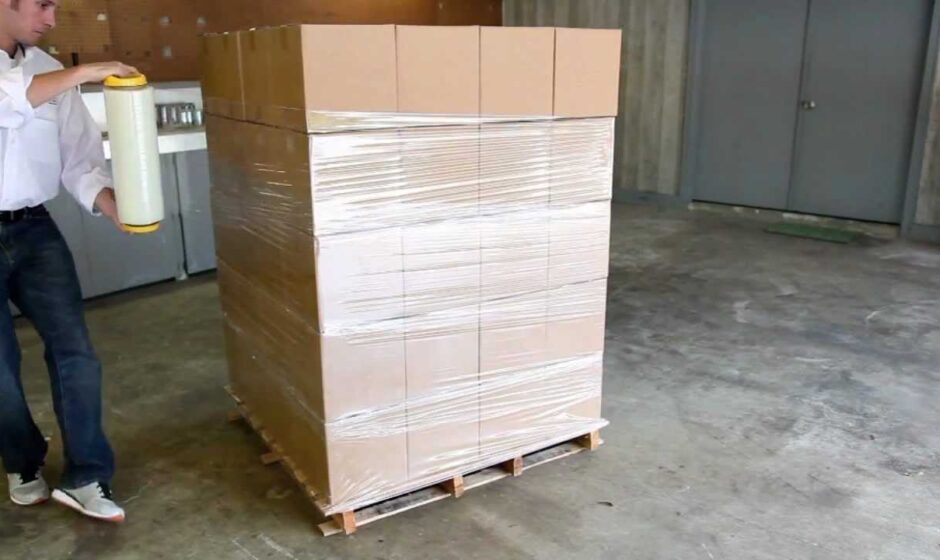When it comes to wrapping products for shipping or storage, many people face a common question: Should you use hand pallet wrap or machine wrap? Finding the right solution depends on several factors, including your budget, the volume of products, and the efficiency you need. This article will walk you through everything you need to know to make the best choice for your business or personal needs.
Introduction
When dealing with logistics, warehousing, or shipping, pallet wrapping is a critical step. But why does it matter so much? Proper pallet wrapping ensures that products are securely held together during transit or storage. Whether you’re moving delicate goods or bulky items, wrapping helps prevent damage and ensures that everything arrives at its destination in good shape. But the question remains: Which method is better—hand pallet wrap or machine wrap?
Choosing the correct method is like picking the best tool for a job. It depends on what you’re trying to achieve and your resources. This guide will detail each method to help you make an informed decision.
What is a Hand Pallet Wrap?
Hand pallet wrap refers to the manual process of wrapping a plastic film around pallets or stacked goods. It’s commonly done using a stretch film that’s stretched as tightly as possible around the items to secure them.
The film used in hand pallet wrap is typically lightweight and can be applied using handheld tools. This method is favored by small operations or companies that don’t need to wrap a high volume of products daily.
What is Machine Wrap?
Machine wrap, on the other hand, involves using a stretch wrap machine. These machines are designed to automatically wrap the pallet by rotating it and applying the film consistently. Machine wrap is ideal for large-scale operations that require fast, efficient, and consistent wrapping.
Machines come in different types, including semi-automatic and fully automatic versions, allowing businesses to choose based on their needs.
Pros of Hand Pallet Wrap
- Low Cost: Hand pallet wrap is much cheaper to start with. You don’t need expensive equipment or a large upfront investment. It’s perfect for smaller businesses that are working with tighter budgets.
- Flexibility: You can wrap pallets of various sizes without needing to adjust any settings. Hand wrap is versatile and can be used in different warehouse environments.
- Portability: Hand pallet wrap requires no power source or machinery, meaning it can be used anywhere, even in the most remote areas of a warehouse.
Cons of Hand Pallet Wrap
- Inconsistency: Since the wrapping is done manually, it’s hard to achieve the same level of tension and consistency with each wrap. This could lead to improperly secured pallets.
- Time-Consuming: It takes longer to manually wrap a pallet, which might be a problem if you need to wrap several in a short time.
- Strain on Employees: Repetitive wrapping can lead to physical strain or injuries for employees, especially in high-volume operations.
Pros of Machine Wrap
- Speed and Efficiency: Machine wrap is significantly faster than hand wrap. In high-volume environments, a machine can wrap pallets within seconds.
- Consistency: The machine ensures that each pallet is wrapped with consistent tension and coverage, which improves stability during transit.
- Less Labor Intensive: Employees don’t have to spend time manually wrapping, reducing physical strain and freeing them up for other tasks.
Cons of Machine Wrap
- Initial Investment: Purchasing a pallet wrapping machine can be costly. This might not be feasible for small businesses or those just starting.
- Maintenance: Machines require maintenance and repairs, which adds to the long-term costs.
- Space Requirement: Machines take up space in your warehouse, which could be a downside if you have limited room.
Hand Pallet Wrap vs Machine Wrap: Cost Considerations
When considering the cost between hand pallet wrap and machine wrap, you need to think beyond just the upfront price. Hand pallet wrap may seem cheaper, but the costs of employee labor, physical strain, and time add up. On the flip side, machine wrap has a high initial cost, but it can save you money in the long run with faster, more efficient wrapping.
Efficiency and Speed Comparison
If speed is a top priority, then machine wrap is the clear winner. A machine can wrap a pallet in under a minute, while hand wrapping takes significantly longer. But what if you only wrap a few pallets a day? In that case, hand pallet wrap may still be the most cost-effective and sensible option.
Which is Safer for Employees?
Employee safety should always be a consideration when choosing your wrapping method. Hand wrapping can cause physical strain and increase the risk of repetitive motion injuries, especially for employees wrapping all day. Machine wrapping reduces the physical effort required, making it safer for workers in high-volume settings.
Which Wrap Type is Best for Small Businesses?
Hand pallet wrap is generally the best choice for small businesses with low wrapping needs. It’s cost-effective, flexible, and doesn’t require a large investment. However, if your business is growing and you’re starting to wrap more pallets each day, you might consider investing in a semi-automatic machine to improve efficiency.
Which Wrap Type is Best for Large-Scale Operations?
For larger businesses or operations wrapping dozens or even hundreds of pallets per day, machine wrap is often the best solution. The speed, consistency, and long-term cost savings of a pallet wrapping machine make it a worthy investment.
Environmental Considerations: Sustainability and Waste
Sustainability is an important factor for many businesses today. Machine wrapping is often more environmentally friendly, as it uses less plastic film compared to manual wrapping. Some machines are even designed to stretch the film to its maximum capacity, reducing waste. Hand wrapping, on the other hand, tends to use more plastic, which can increase your environmental footprint.
Conclusion
When deciding between hand pallet wrap and machine wrap, it’s important to weigh the pros and cons of each based on your specific needs. For small businesses or those with minimal wrapping requirements, hand pallet wrap is affordable and flexible. On the other hand, if you run a large-scale operation where speed and consistency are crucial, investing in a pallet wrapping machine could be the best choice.
Ultimately, it comes down to your budget, the volume of products you need to wrap, and the level of efficiency you’re aiming for.



